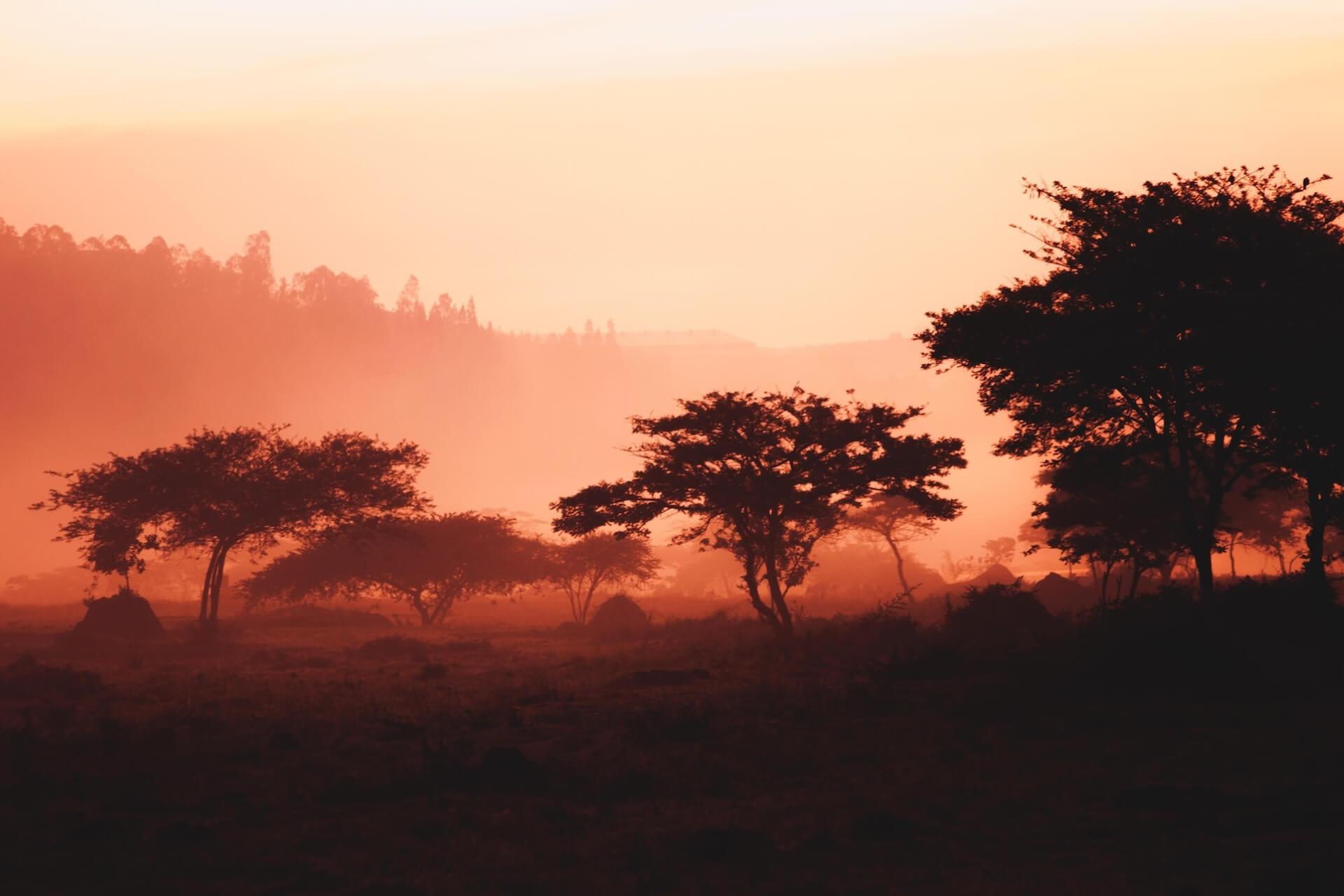When I visited Rwanda at the beginning of 2010, I had no idea that I would return in a few years. But as a nature lover and amateur photographer, I could hardly have asked for more. Four-thousand-foot volcanoes and valleys with raging waterfalls, impenetrable forests and arid savannahs. Plus the mysterious creatures that inhabit these environments. Such is the diversity of Rwanda, one of Africa's smallest countries.
Land of a thousand hills
Here we quickly understood why Rwanda is called the land of a thousand hills – where one ended, another began. Some of the hills were so steep that they sharply jutted out of the landscape, and almost every one was cultivated, used for agriculture almost to the top. Terraced fields adorned the hillsides in varying shades of green and brownish-red, depending on what was currently being grown.
Driving through Rwanda with a blind map
In the capital Kigali we bought a map of Rwanda. The only map that was available. Unfortunately, upon closer inspection, we discovered that the map was missing the names of towns and villages! Just a blank map. We wanted to drive through Rwanda from north to south and then take a different route back north and back to Uganda, where we would then catch a plane home.
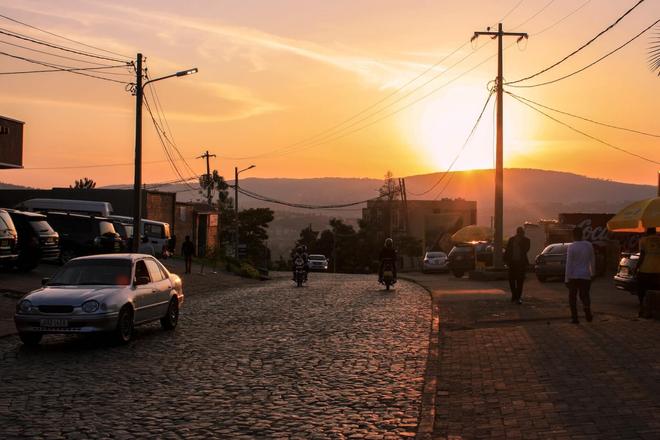
And our main destination in Rwanda was Volcanoes National Park in the northwest of the country, where we had a varied programme planned: climbing Karisimbi – the highest mountain in Rwanda (4507 m), a hike to see mountain gorillas and climbing Bisoke volcano (3711 m). Fortunately, we took the right turn at all the forks and the next evening we arrived in the town of Musanze (formerly called Ruhengeri), which is the gateway to the aforementioned national park.
Volcanic Park
The backbone of this national park is a string of several inactive volcanoes: Muhabura (4127 m), Gahinga (3474 m), Sabyinyo (3634 m), Bisoke (3711 m) and Karisimbi (4507 m). It was between Karisimbi and Bisoke that the dedicated American scientist Dian Fossey once established her base, without whom there would probably be no mountain gorillas today.
The park lies on the border with the Democratic Republic of Congo, where it is called Virunga National Park. On the Congolese side there are other volcanoes – Mikeno (4437 m), Nyamulagira (3058) and the most famous and destructive Nyiragongo (3470 m). The last two are very active volcanoes. Some volcanoes are open to tourists, but local guides and armed rangers are required everywhere. They are said to be armed in case of an encounter with a buffalo.
Climbing Karisimbi
One of the most beautiful volcanoes in the national park, it measures 4507m. The climb takes two days. In addition to the obligatory guide and rangers, you can also hire a cook or at least porters. And believe me, as you climb up the steep slope at an altitude of over 3000m, you will be grateful for every step you can take without your heavy backpack.
The trek starts from an altitude of 2600m. On the first day of the trek, you will pass through a dense growth of lobelia, nettles and massive hagenia trees, from whose branches long tufts of white moss hang like beards. The soil is waterlogged, sometimes even boggy. Rubber boots are definitely useful here (I didn't have them). You climb up to 3500m where there is a campsite – a shelter under which you can pitch your tent. Here you will see for the first time Muhabura, Gahinga, Sabyinyo and Bisoke volcanoes together as one (eastwards). The Congolese volcano Mikeno peeks out from the north as if from another world.
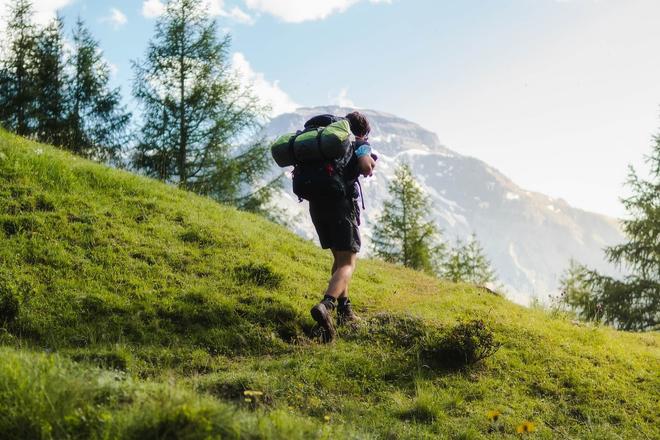
The next day you need to leave before dawn. The terrain is much more difficult than the previous day. At first you only go by headlamp light. Stumbling over roots, climbing fallen, moss-covered logs. The slope gets steeper and steeper. In fact, it's probably better that you can't see exactly what terrain you're traversing. Everything changes with the first rays. Not the terrain, that is, but the conviction that you're doing the right thing, that you're really going up (I doubted it quite a bit for the first part of the morning climb).
The first rays of the sun silhouette the giant volcanoes. An hour or so later, this Africa hides nothing from you – the morning sun bathes the landscape in golden light and reveals it all. Suddenly, it's a completely fairytale world. You're alone on a slope of incredible inclination, and below you is absolute beauty – a combination of unique Afro-Alpine vegetation and a view of the peaks of the surrounding volcanoes from above. You are almost flying. Reaching the top of the mountain is just an optional extra. The most beautiful thing you can experience on Karisimbi is below the summit.
Mountain gorilla expedition
You will hardly find a more beautiful experience in the world than looking into the eyes of a mountain gorilla. You can do just that at Volcanoes Park. But it takes a lot of planning ahead and a lot of money. It's recommended to book your mountain gorilla trek dates at least six months in advance.
The trek to the gorillas can take as little as an hour or as long as five hours, depending on the gorilla family assigned to you by the park management. But you won't find out until the morning before the trek at their office in Kinigi village, so you'd better be prepared for a full day trek through the dense jungle. Again, you'll go with a local guide and rangers. Mountain gorillas were discovered to the world by German Captain Robert von Beringe in 1902. He shot two of them and sent them to the Berlin Museum, where they were described as a new species of Gorilla beringei.
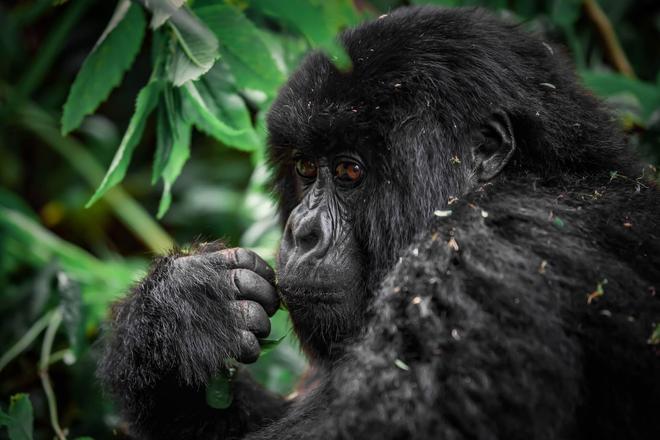
Tourists in Volcanoes NP can visit the so-called habituated gorilla families, those that are accustomed to human presence. There are now about eight or nine such gorilla groups in the park. Each of them is guarded almost constantly by a group of rangers, who then guide the guides by radio to where the gorillas are. So you're almost certain to see them. The question is how much effort and time you'll have to put into it.
The minimum distance of 7 metres from the gorillas is sometimes difficult to maintain.
When the gorillas are really close, the guide will stop you and ask you to put all your belongings away – backpacks and trekking poles. You can keep your cameras. This is followed by a short briefing on how to behave: don't take pictures with flash, don't talk loudly, don't look the gorillas in the eyes, don't touch the gorillas, don't approach within seven meters...
The last requirement is sometimes quite difficult to meet, because if a gorilla decides to walk right past you, there's nothing anyone can do about it. Especially the cubs, they're curious and contact-oriented. It's not uncommon for a cub to come up and sit right next to you, or even grab you. In such a case, you must definitely not return any touching. Such behaviour would be seen as an act of aggression by the silverback male leader and he may react accordingly.
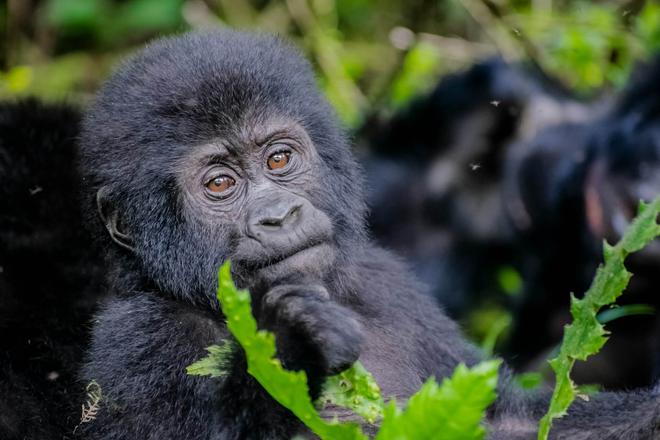
You will spend one hour with the gorillas. That's the most the animals can take. But believe me, an hour is a dream. I've been with gorillas a total of three times, twice in Volcanoes National Park with mountain gorillas and once with eastern gorillas in neighboring D.R. Congo.
I have never regretted the money spent. In the presence of gorillas you get a glimpse of yourself – they are, after all, one of our closest relatives. I certainly didn't feel afraid. I didn't look at the gorillas as animals. There is too much humanity and wisdom in their eyes for that. I can only say one more thing: make this dream come true for yourself someday too!
Genocide in Rwanda
Rwanda is best known to the public for the bloody events of 1994, in which one million minority Tutsis and moderate Hutus were massacred between 6 April and 18 July. This was the biggest genocide since the Second World War, and is often blamed on the UN, which, although it could have, failed to prevent this tragedy.
It is fair to say that the current President, Paul Kagame, is now benefiting from these accusations, with billions of dollars of foreign aid flowing into the country. However, unlike his African counterparts, Kagame is able to use this money quite effectively and meaningfully. The atrocities of 1994 are now commemorated by genocide memorials in Rwanda, which are a powerful and sad experience to visit. Incidentally, Rwanda is now one of the safest countries in Africa.
Return to Rwanda
The most famous national park in Rwanda is undoubtedly Volcanoes National Park, mainly because of its mountain gorillas. Ever since my first encounter with these apes, I have longed to return to Rwanda again. I did so in the autumn of 2012. It was a three-week trip – two weeks in Rwanda and one in DR Congo. This time I didn't miss the other protected areas – Nyungwe Forest NP and Akagera NP.
Nyungwe Forest is located in the south of the country on the border with Burundi. It is the only place in Africa where 13 species of primates live – chimpanzees, guerrillas, mangabeys and several species of cats. You'll find mountain rainforest with deep valleys and hidden waterfalls, as well as open countryside excellent for birdwatching (over 280 species are said to live here).
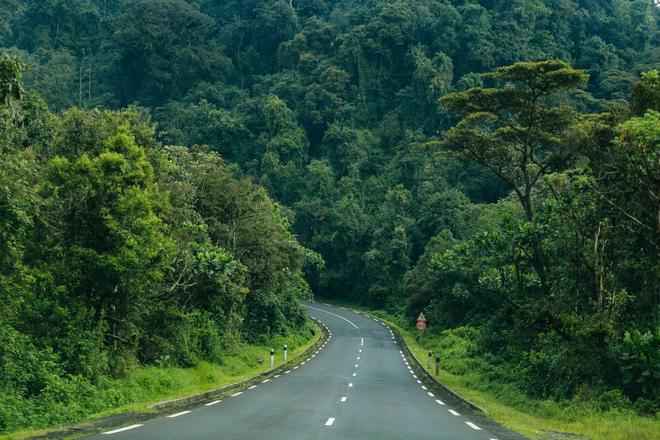
The national park is surrounded by endless tea plantations which are very photogenic, especially in the morning mist. To get to Akagera National Park you have to go to the northwest of Rwanda. It's a completely different landscape. The horizon of the vast savannah is adorned with acacia and pine trees. This landscape is home to buffalo, zebra, giraffe, many species of antelope and primates. Even Africa's most venomous snakes, the black mamba, are common here. The lakes and wetlands are the kingdom of the papyrus – an ideal habitat for waterfowl. Hippos and crocodiles also find refuge there.
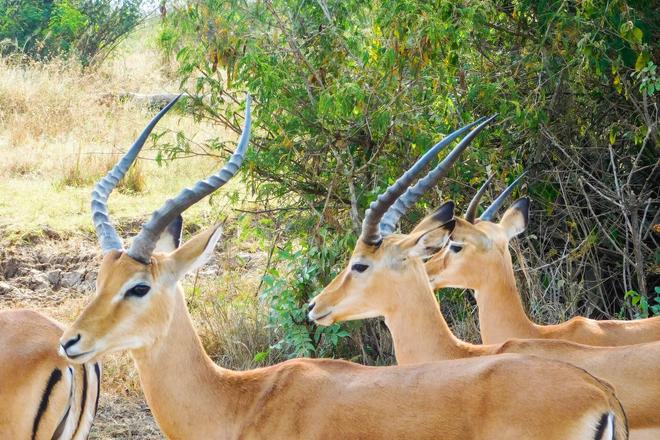
The second visit to Volcanoes National Park was not as physically demanding for me. Apart from the adored mountain gorillas, I also took a hike to see the habituated golden monkeys. You can also stay with them for just an hour. The animals are often three metres or closer to you, so you have great photo opportunities. The Intore dance performance just outside the park headquarters in Kinigi was also a great experience. This is a dance of Rwandan warriors, to the sound of traditional Ingoma drums.
Transformation
I was very surprised by how much Rwanda has changed in these two years. Especially the country's infrastructure. New roads confidently carved their way between the hills, and even the direction signs were no longer missing. New residential areas have sprung up in Kigali, and a new airport is planned. Bill Gates has a huge plot of land in the middle of the capital, and the plan, he says, is to make Rwanda the technological and information centre of Africa. Whether one of Africa's most populous and poorest countries will succeed in doing so is a question I may one day answer if I revisit this small but beautiful country...
